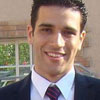For some people, getting quality sleep is a struggle because they experience symptoms and discomfort like when their heart beats fast at night can’t sleep. Others deal with the opposite issue where their heart rate is too slow which sometimes results in a wide range of symptoms. In cases like this, the prognosis leads to sinus bradycardia - a heart rhythm condition that isn’t widely talked about.
This post explores this condition and imparts well-grounded answers to these questions: What is sinus bradycardia? How do you recognize it?
How is Sinus Bradycardia Defined?
Sinus bradycardia is a heart rhythm condition manifesting a heart rate lower than 60 beats per minute. The sinus node, the heart’s natural pacemaker, is part of your heart whose main function is to produce electrical signals that make your heartbeat. Hence, when your sinus node sends a low electrical current to your heart, it causes it to pump at a lower rate.
The term bradycardia originates from the Greek words “bradys” or “slow” and “kardia” or “heart.”
The normal sinus rhythm when at rest is 60 to 100 bpm and people with sinus bradycardia may have 50 to 60 bpm only. These values are considered normal, especially among athletes. Also, this heart rhythm condition may be prevalent in both young and old.
Sinus bradycardia normally occurs in sleep specifically when a person is in deep sleep. In other cases, it manifests with sinus arrhythmia - the time interval between heartbeats depending if you’re breathing in or breathing out.
What Is The Meaning Of Sinus Bradycardia And Is It Dangerous?
The above discussion answers the question, “What is sinus bradycardia?” To further simplify the term, sinus bradycardia means your heartbeat is slow but still normal because it is still using sinus rhythm. More precisely, the heart rate slows down due to low impulses coming from the sinus node. This is different from another type of bradycardia known as “heart block” - an abnormality that blocks the normal passing of electrical signals to the heart also causing a low heart rate.
Sinus bradycardia isn’t serious unless you’re experiencing symptoms. For example, if the heart rate in 30s while sleeping drops below the healthy range, it may still be normal, especially among athletes.
What is too low of a heart rate while sleeping, then? A heart rate that is lower than 30 bpm is unsafe and should serve as a wake-up call to schedule an appointment and see your doctor.
In rare cases, bradycardia may lead to cardiac arrest. If you experience symptoms and they’re persistent, see your doctor and modify your lifestyle.
What are the Causes and Risk Factors of Sinus Bradycardia?
To understand the question “What is sinus bradycardia?” is a call to recognize the causes. Slow heart rate may be rooted in several underlying health conditions which include:
-
Congenital condition
-
Inflammatory conditions affecting the heart e.g., myocarditis and pericarditis
-
Heart damage caused by aging, heart attack, and heart disease
-
Imbalance of electrolytes
-
Underlying health problems such as sleep apnea or hypothyroidism
-
Infections such as Lyme disease
-
Medications such as beta-blockers, lithium, or calcium channel blockers
-
Sinus node dysfunction
-
Stress and anxiety[1]
Everyone can experience bradycardia, but some people are at a higher risk. Common risk factors for sinus bradycardia include:
-
Family history of heart disease
-
Older age
-
High blood pressure
-
Smoking
-
Obesity
-
Diabetes
-
High cholesterol levels
-
Regular athletic activity
Sinus Bradycardia Diagnosis Process
To diagnose sinus bradycardia, the doctor will perform an initial physical exam by taking your blood pressure, measuring your heart rate, and listening to your heart. The doctor may also ask you questions about your medical history and the symptoms you’re experiencing.
To confirm the diagnosis and rule out other conditions, the doctor may order the following tests:
-
Electrocardiogram (ECG): measures the electrical signals that pass through the heart. Most people may have heart palpitations but normal ECG, which is why other tests are necessary for diagnosis. The doctor may also perform a thoracic ECG to determine abnormalities in your heart’s function and anatomy.
-
Stress testing: monitors heart rate while you’re exercising. A doctor uses this test to evaluate how your heart rate responds to physical activity.
-
Sleep monitoring: helps measure heart rate while sleeping or detect sleep apnea, which may cause bradycardia.
-
Toxicology screening: checks for drugs and other substances in blood that may lead to bradycardia.
-
Blood test: helps detect whether bradycardia results from electrolyte imbalance, hypothyroidism, infection, or other health problems.
Once the doctor diagnoses the problem, they will educate you on what is sinus bradycardia and how you can manage it.
What Are the Symptoms of Sinus Bradycardia?
In many cases, sinus bradycardia is asymptomatic, i.e., it doesn’t cause specific symptoms. The signs and symptoms may appear when the heart starts pumping insufficient amounts of blood to organs. The most common symptoms[2] of sinus bradycardia include:
-
Feeling dizzy or lightheaded: since bradycardia can lead to insufficient blood flow to the brain, you may experience dizziness or lightheadedness.
-
Becoming tired quickly when you’re physically active: due to a slower heart rate, your body may not receive sufficient amounts of oxygenated blood during physical activity, which may lead to weakness during workouts.
-
Fatigue: reduced cardiac output and decreased oxygen delivery to tissues may lead to fatigue which may cause you to experience a slow sleeping heart rate as well.
-
Shortness of breath: insufficient blood flow to the lungs may lead to shortness of breath, particularly during exertion.
-
Chest pain: Lower blood flow to the heart may cause chest discomfort. Increased pressure on blood vessels[3] may also lead to high blood pressure.
-
Being confused or having trouble with memory: due to the reduced blood flow to the brain, you may experience confusion, memory problems, and difficulty concentrating.
-
Fainting: in severe cases, inadequate blood flow to the brain can lead to fainting or syncope, especially when standing up quickly or during physical exertion.
How is Sinus Bradycardia Treated?
Unless you experience symptoms, treatment for sinus bradycardia typically isn’t necessary. If you’re physically active and in good shape your doctor may not recommend treatment initially. However, if you experience symptoms your doctor may recommend the following treatment options:
-
Electrical pacing: The surgeon implants a permanent pacemaker that delivers electrical current and normalizes heartbeats. Temporary pacemakers are also available, but they are usually an option when you need to wait for a permanent one.
-
Medication: intravenous and injectable medications such as atropine can accelerate your heart rate temporarily. Your doctor may adjust the medications you’re currently taking if they’re causing bradycardia.
-
Avoiding triggers: if you experience bradycardia due to certain triggers, you may need to avoid them. Common triggers are sleep apnea, drug therapy, hypothyroidism, myocarditis, pericarditis, and infectious disease. In these cases, you will need to take care of triggers by treating underlying health issues.
Besides these treatment options, it also helps to consider your sleep position. Make sure to sleep on your back or right side. This is also the best way to lay to lower heart rate immediately as it helps normalize heart rate especially those with cardiovascular problems.
How To Prevent Sinus Bradycardia?
There is no foolproof way to prevent bradycardia, but there’s a lot you can do to minimize the risk of developing this heart rate problem. Reducing the likelihood of developing bradycardia involves lifestyle modifications and managing underlying health conditions. These tips can help you out:
-
Exercise regularly: physical activity promotes cardiovascular health and helps regulate heart rate[4].
-
Eat a well-balanced diet: increase your intake of fruits, vegetables, whole grains, healthy fats, and lean protein. The Mediterranean diet is particularly beneficial for heart health. Avoid or reduce your intake of unhealthy and heavily processed foods with too much sodium, sugar, and trans fats, all of which are bad for your heart rate.
-
Take dietary supplements for heart health: supplements like Vazopril Blood Pressure Support promote overall cardiovascular health by normalizing blood pressure, and cholesterol levels, and improving blood flow.
-
Avoid stimulants: caffeine, nicotine, and some medications act as stimulants and may affect heart function and heart rate. Strive to avoid or reduce caffeine intake, quit smoking, and consult a doctor about medications you're using to improve your heart rate.
-
Manage stress: when left unmanaged, stress can negatively affect your heart rate. Practice stress-reducing techniques such as meditation, yoga, or deep breathing to reduce the risk of bradycardia.
-
Stay hydrated: dehydration can affect heart function[5], which is why it’s important to drink plenty of fluid. Aim for six to eight glasses of water a day.
-
Don’t miss your checkups: visit your doctor regularly for checkups and screenings to monitor your heart health and detect potential issues early. Regular checkups are particularly important for people who are at a higher risk of bradycardia. Your doctor will explain what is sinus bradycardia, how to recognize it, and how to minimize the risk.
Lowering the risk of bradycardia requires a proactive approach, which is especially important if you are already managing other cardiovascular issues.
Frequently Asked Questions
Is sinus bradycardia heart block?
Sinus bradycardia is not a heart block. While sinus bradycardia is a slower-than-normal heart rate that originates in the sinus node, a heart block is an impairment in the heart's electrical conduction system. Both problems lead to slow heart rates, but their underlying causes are different.
When should I be worried about bradycardia?
You should be worried about bradycardia if your heart rate is less than 60 bpm and you're experiencing symptoms such as dizziness, shortness of breath, fainting spells, and chest pain. If you have a history of heart disease and experience bradycardia, make sure to see your doctor. The doctor can evaluate your condition and determine whether further monitoring or specific treatment is necessary.
Takeaway
The focus of the discussion above is finding answers to the question “What is sinus bradycardia?” and other matters concerning slow heart rate. Sinus bradycardia isn’t a serious problem unless you start experiencing symptoms. Having that said, modifying your lifestyle is key to improving your cardiovascular health. As they always say, taking preventive health measures will keep the serious consequences at bay.
References
1] ↑ https://www.frontiersin.org/journals/psychiatry/articles/10.3389/fpsyt.2014.00080/full
2] ↑ https://www.ncbi.nlm.nih.gov/pmc/articles/PMC10689927/
3] ↑ https://www.hcahealthcare.co.uk/our-services/conditions/bradycardia
4] ↑ https://www.ncbi.nlm.nih.gov/pmc/articles/PMC6481017/
5] ↑ https://bmcinfectdis.biomedcentral.com/articles/10.1186/s12879-021-06143-2




